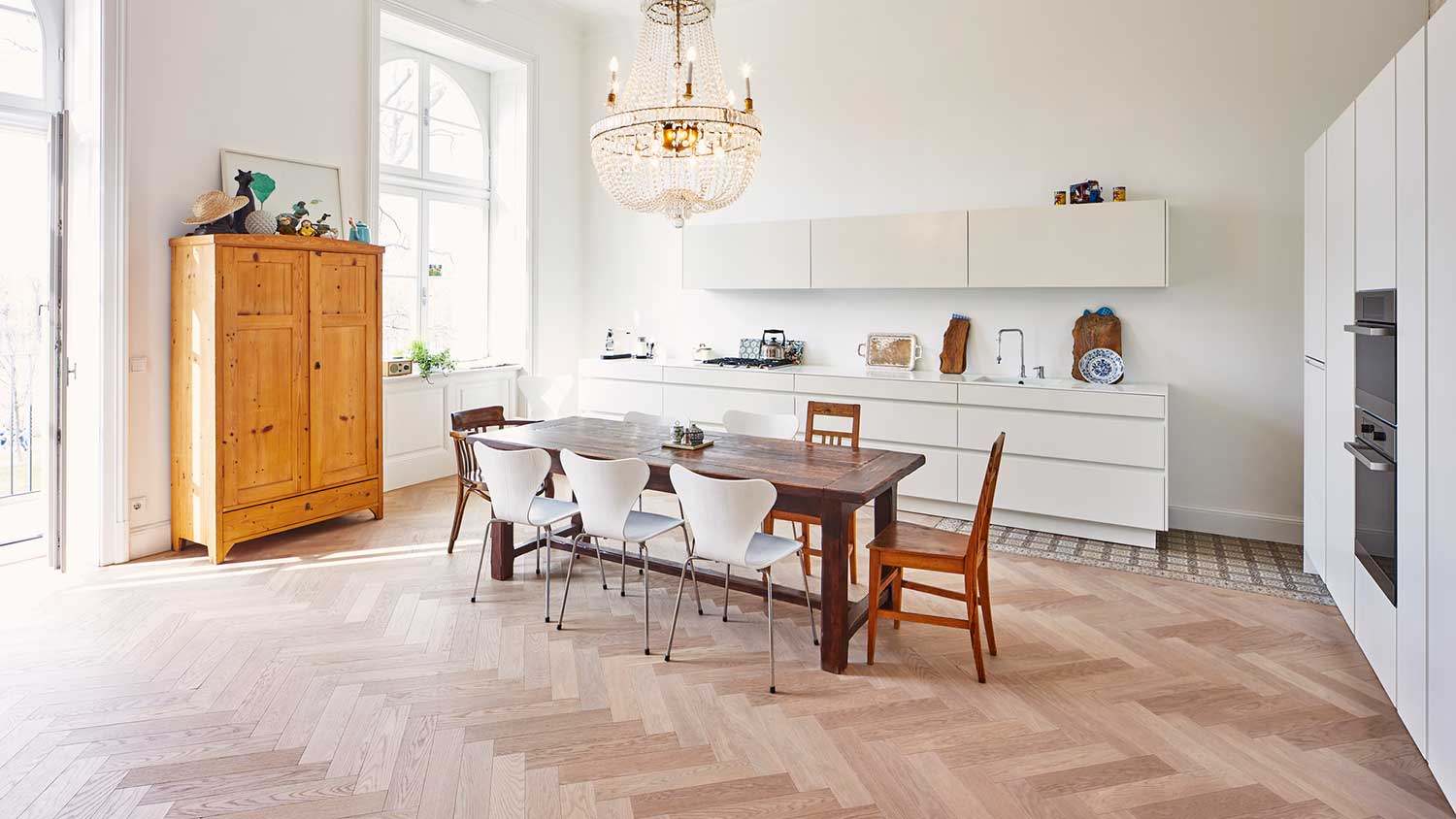
Here’s what you should expect to pay when renting an orbital, drum, vibrating, or edging floor sander—as well as where you can rent them and what else to know.
Control how much natural character shines through in your wood floors


Natural wood imperfections include knots, streaks, and wormholes.
Hardwood grading systems help you determine the look of a floor.
Grading refers to the wood’s appearance, not quality or durability.
Planks with the most uniform look are rare and tend to cost more.
Rustic-looking planks are more affordable and hide damage well.
Known, loved, and often imitated for its aesthetic qualities, natural hardwood flooring varies in look depending on species and stain. Because they’re harvested from real trees, wood planks also feature unique patterns and imperfections. To give you more control over the final look of your floors, hardwood is held to certain grading standards. We’ll explain the system and the different grades you’ll encounter when comparing hardwood types.
One of the most important things to know before selecting hardwood floors is that every piece of wood features natural irregularities called character marks. Hardwood grading scales define these marks and help homeowners and pros alike measure their number in different types of wood. Natural character marks include:
Knots: Dense, round spots formed at the base of a branch. Most grades only allow “sound” knots of smooth, solid wood.
Streaks: Caused by mineral deposits in a tree’s rings or by the tree’s sap. These are long, thin, dark areas in the wood.
Wormholes: Created by worms or grubs while the tree was still alive, these spots are generally no more than a quarter-inch wide.

Several different grading scales are used in the lumber industry, including unique scales that individual manufacturers have for their own products. However, the system established by the National Oak Flooring Manufacturers Association (NOFMA), upheld by the National Wood Flooring Association (NWFA), is used for almost all hardwood flooring sold in the U.S..
This system provides a standard set of rules to grade hardwood by appearance and the presence of certain character marks—giving buyers an idea of what they can expect the face of each board to look like and helping them find the exact style they’re looking for. It doesn’t assess the wood's quality, durability, stability, structural integrity, or hardness.

Before making a purchase or hiring a local hardwood installer, consider the look you want to achieve and choose one of the following wood flooring grades to match your vision.
Sometimes called Firsts and Seconds (FAS), Clear Grade is premium wood from the heart of the tree. These boards are somewhat rare, so they’re often sliced thin for use in engineered hardwood planks. Clear Grade wood almost always costs more than character grades. Features include:
Consistent grain and color from board to board
A face all but free of character marks
Smooth, uniform look and classic, clean tone
Cut from both heartwood and sapwood, Select Grade hardwood accounts for no more than 15% of the tree. These boards are in the same cost range as Clear Grade wood, so the two grades are often bundled together. Features include:
ore color variation between and within boards
Subtle differences in grain pattern from board to board
Fairly consistent face, largely free of imperfections
The common grades start to let the character marks shine through and show them off as a design feature. If you want to highlight the natural beauty of your hardwood flooring without making it the focal point of your room, you can opt for the more subtle character of #1 Common Grade wood. Features include:
More variation in color, with both light and dark boards
Small but visible swirls, knots, and streaks in most boards
More variation in board length
Sometimes called “Rustic Grade,'' this grade moves even farther away from uniformity and puts the organic natural appearance of the wood on display. The heavy character markings can help hide scratches and dings in high-traffic rooms or homes with active pets or children—making your hardwood flooring care routine more manageable. Features include:
Stark color variations from board to board
Darker and more frequent streaks, knots, and wormholes
Highly inconsistent grain patterns and swirls
This grade offers a rough-hewn look that’s great if you’re designing a playroom, workshop, a literal cabin, or any room that might experience a lot of wear-and-tear thanks to its ability to hide damage. You’ll find bundles of Cabin Grade wood at substantially lower prices than other grades. Features include:
No consistency in color or grain pattern
Large streaks, deep knots, and other marks
From average costs to expert advice, get all the answers you need to get your job done.

Here’s what you should expect to pay when renting an orbital, drum, vibrating, or edging floor sander—as well as where you can rent them and what else to know.

Both materials and labor determine hardwood floor installation costs. This guide breaks down all the prices you need to know before starting your new flooring project.

It’s impossible to keep floors damage-free over the years. Thankfully, the cost to refinish hardwood floors is far less than the price tag to replace them altogether.

You can transform your floor from cold, hard concrete into warm, soft carpet. This guide teaches you how to install carpet on concrete for a lush DIY transformation.

Staining a wood floor is no easy task, so we put together this handy guide to choosing the right floor stain color for your home.

If you want to avoid hiring a professional to refinish your floors, it can pay to learn how to restore hardwood floors without sanding.